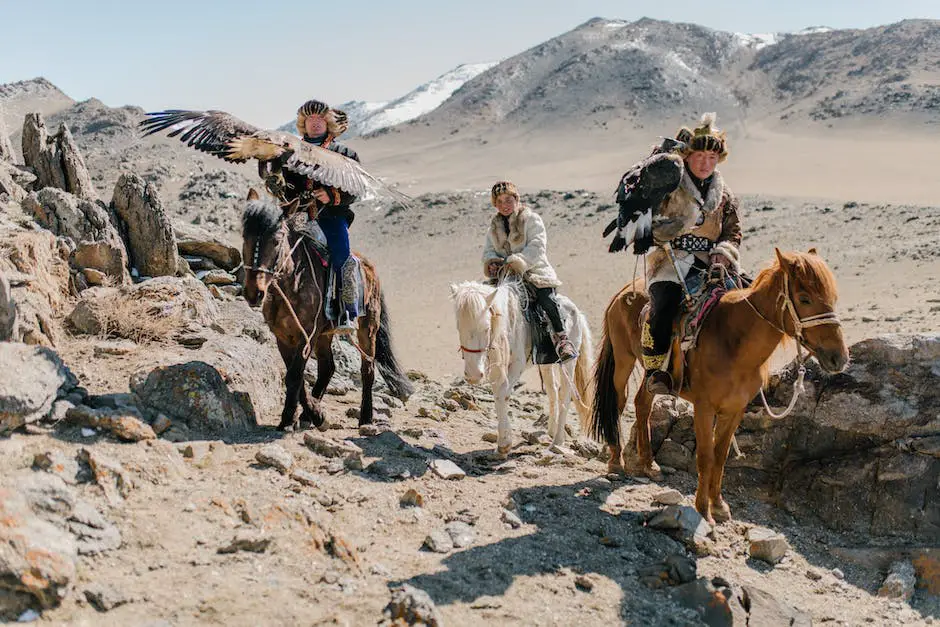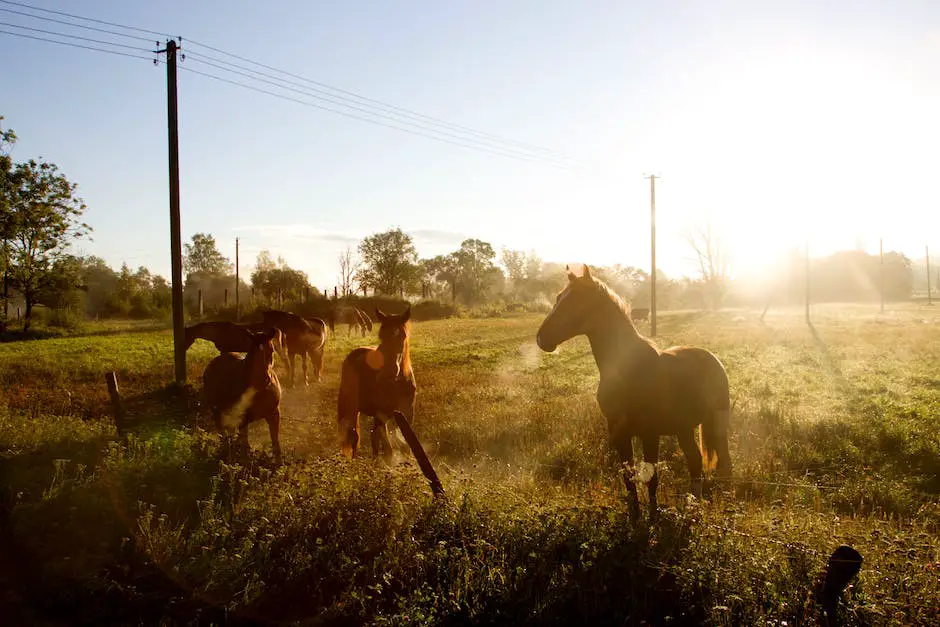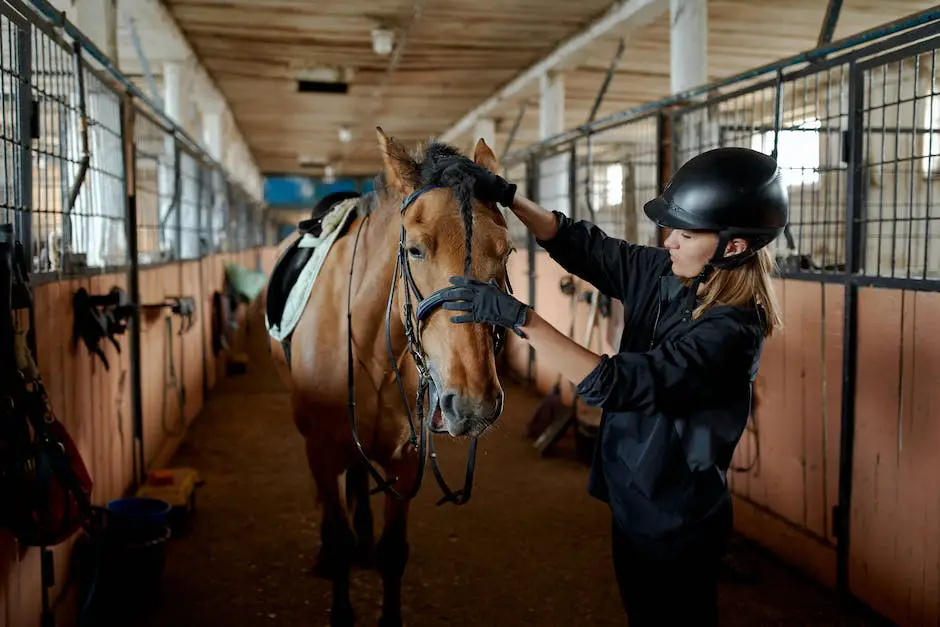Equestrianism in France holds a rich and storied tapestry, interwoven with considerable influence and illustrious individuals who have left indelible imprints on the global stage. The potential of this sport was recognized centuries ago, engendering a profound culture which echoes through France’s history and character, taking form in diverse equestrian activities such as traditional horseback riding, jumping, and trialing. Commanding respect on an international level, French equestrianism has continually provided impetus to the world of horsemanship. This exploration of France’s equestrian past and present sheds light on the lives and legacies of iconic French equestrians, whilst examining the impact of the French style, techniques, training methods, and competitions on worldwide equestrianism.
Table of Contents (Horspedia)
Historical Context of Equestrianism in France
Origins of Equestrianism in France
Equestrianism in France has deep roots in history, tracing back to the Middle Ages when knights used to ride horses in battle and tournaments. Riding a horse was an essential skill for warriors, which paved the way for the development of various horse riding techniques and tactics.
These techniques evolved throughout the centuries to include a range of disciplines, from classical dressage to the highly acrobatic moves seen in the sport of vaulting. The 16th century reign of King Francois I, an avid horse lover and breeder, is considered a turning point in the French equestrian history due to the establishment of the French school of horsemanship.
The French School of Horsemanship
During the 16th and 17th centuries, the French School of Horsemanship rose to prominence alongside a more systematic and refined approach towards training and breeding of horses. King Louis XIV, under the rule of whom the royal stables, Le Grande Ecurie was built, was a major influence in promoting equestrian pursuits.
The French School, based in Saumur, France, focuses on classical dressage and the principles of lightness and ease of movement. It is here that the Cadre Noir, an elite group of master horse trainers and riders, was formed. This institution continues to exist today and plays an integral part in preserving and promoting French equestrianism.
Influence of French Equestrianism
The influence of French equestrian tradition is spread wide. It played a crucial role in the development of Equestrianism in England around the 18th century. Later, French horsemen and horses significantly contributed to the establishment of the United States cavalry.
The techniques and principles of the French School of Horsemanship have also significantly shaped modern Olympic equestrian disciplines, and many of its riders have become Olympic and World champions. French riders like Michel Robert, Pierre Jonquères d’Oriola, and Patrice Delaveau are among the renowned figures in the world of equestrian sport.
Contemporary Significance
In contemporary France, equestrianism is hugely popular. The country is home to an estimated one million horses, and horse riding is the third most popular sport among the French women. France also organizes numerous national and international equestrian events, including the World Equestrian Games and the Bordeaux Riding Competition.
The French equestrian industry also has significant economical importance. It employs around 180,000 people directly and indirectly and includes a wide range of professionals, from breeders, trainers, and riders to veterinarians, farriers, and saddle manufacturers.
Modern Day Equestrians: A Glimpse
In present times, France continues to produce top-notch equestrians. Kevin Staut, Roger-Yves Bost, and Simon Delestre are modern-day French show jumpers who have excelled in various international competitions.
In dressage, Morgan Barbancon Mestre is a well-known French equestrian, representing France in multiple Olympic Games. Jean Teulere and Nicolas Touzaint have made their mark as French eventing riders.
In Endurance, Virginie Atger and Jean Philippe Frances are among the top French riders. The French endurance team has often been among the best in the world, winning numerous team and individual titles.
The sport of equestrianism in France is alive and well, largely due to its rich history, expansive infrastructure, and ongoing efforts to foster and promote the sport. From its historical roots to its contemporary forms, equestrianism remains an integral facet of French culture and national identity.

Overview of Famous French Equestrians
Saluting Historical French Equestrians: Indispensable Pioneers in the Field
When exploring French equestrian heritage, the name François Baucher is impossible to overlook. A 19th-century equestrian, Baucher was instrumental in establishing a technique named “Baucherism”. This innovative approach is characterized by fine, nuanced control over the horse’s movements. It centres on the dialogue between horse and rider through gentle rein cues. Baucherism, considered groundbreaking when introduced, continues to be esteemed in numerous equestrian circles for its emphasis on partnership between horse and rider.
Equally important is Etienne Beudant, another 19th Century equestrian who further refined Franco-Baucher techniques, creating what is known today as French Classical Dressage. Beudant split his time between his duties as an army officer and an equestrian, offering substantial contributions to both military and dressage horsemanship. Distinguishing factors of French Classical Dressage include its meticulous detail, precision and the importance it gives to the horse’s comfort and relaxation throughout training.
Modern Day French Equestrians: Setting New Records
Fast forward to the 21st century, and we see a new cohort of French equestrians making their mark in the field. Michel Robert, for instance, has had a prolific career in showjumping. Known for his unique riding style and exceptional ability to communicate with his horses, Robert is a veteran of multiple Olympic games and has numerous European and World Championship medals under his belt.
Another prominent figure in the present-day equestrian world is Penelope Leprevost. Leprevost, a female showjumper, has been a consistent competitive force in individual and team events, clinching several victories and top placements in prestigious events like the World Equestrian Games and the European Show Jumping Championships.
Redefining Equestrianism: The French Touch
What sets French equestrians apart is their holistic approach to the sport. Inspired by historical figures like Baucher and Beudant, the French approach to equestrianism values the wellbeing and mental state of the horse just as much as its technical skills and physical conditioning. This unison between rider and horse or ‘legerté’ (lightness), is visible in the styles of modern day riders like Robert and Leprevost.
Consider Kevin Staut, for example, another internationally renowned French showjumper. Staut has been vocal about his focus on establishing long-term relationships with his horses, emphasizing trust, respect, and mutual understanding as the foundation of a successful partnership.
Significant Contributions to Equestrianism
French equestrians have consistently made considerable contributions to the advancement of the sport. The cornerstone of modern training methods derives from the innovative techniques proliferated by historical figures such as Baucher and Beudant. Modern stalwarts like Robert, Leprevost, and Staut, have taken these methods in stride, consistently refining them to suit contemporary equestrian sports while pushing the limitations. Their philosophy, which places rider-horse communication and the health of the horse at its center, perfectly encapsulates what is often referred to as the ‘French Touch’ in equestrianism.

French Influence on World Equestrianism
France’s Impact on Global Equestrianism
The imprint of French equestrian culture on the international stage traces its roots back for centuries and carries a strong influence on today’s worldwide equestrian sports, breeding, and training practices. The rich French equestrian heritage has been pivotal in promoting sophisticated horse riding techniques and fostering the popularity of international equestrian competitions. Thus, France’s longstanding influence maintains its relevance to this day.
French Equestrian Techniques
Of French equestrian techniques, one method stands out in particular: Dressage. The roots of dressage, a highly refined form of riding in harmony with the horse, originated in the French military. The principles of lightness, straightness, calmness, and freedom were spread worldwide by the famous French cavalry officer François Robichon de La Guérinière in the 18th century, and his principles still stand today.
French riders are also known for their “natural horsemanship” methods, characterized by communication and understanding rather than force and coercion in training horses. This method emphasizes the horse’s natural instincts and methods of communication, using the least force necessary.
Famous French Equestrians
Several French equestrians have made their mark on the global stage, epitomizing the nation’s influential role in the sport. Pierre Jonqueres d’Oriola, a French show jumper, is one of the most decorated equestrians in history. He won two Olympic gold medals, one in Helsinki in 1952 and the other in Tokyo in 1964, earning his reputation as one of France’s and the world’s finest riders.
In the realm of dressage, Margit Otto-Crépin etched her name in history by earning a silver medal at the 1988 Seoul Olympics, riding her horse Corlandus. She was also a ten-time champion at the French Dressage Championships and clinched the title at the 1989 European Dressage Championships.
Jean-François Pignon, known for his artistic performances that incorporate elements of dressage and high school dressage, has also left a lasting impact on the international equestrian scene. His training methods, often described as “horse whispering,” have been influential in promoting humane treatment of horses and understanding their behavior.
The Role of French Equestrian Competitions
France has also contributed to the global equestrian community by hosting and promoting prestigious international competitions. The Paris Longines Global Champions Tour and Saut Hermès have become renowned fixtures on the global equestrian calendar, attracting the world’s top riders.
Moreover, the Mondial du Lion, held in France’s Loire Valley, is regarded as the world championship for young eventing horses and has helped elevate eventing on the global stage.
French Horse Breeding
French horse breeding is renowned for producing top-quality sport horses. Notably, the Selle Français breed, known for its athleticism, has jumped and run its way to the top tiers of international competition. The breed’s success is a testament to the selective breeding practices prevalent in France, further highlighting the country’s influential role in the equestrian world.
Wrapping Up
France’s incomparable role in the global equestrian scene is underscored by its significant contributions to training methods, prestigious racing events, esteemed riders, and superior horse breeds. The nation continues to shape and redefine how we appreciate and interact with the equestrian world in light of these far-reaching influences.

Current State and Future Trends in French Equestrianism
The Current Climate of Equestrianism in France
For years, French equestrianism has been recognized and respected on a global scale. Today, it isn’t just a noteworthy component of the country’s culture and sports, but a public fascination – particularly with horse racing and show jumping.
The up and coming French equestrians, Victor Levecque, Thais Meheust, and Thomas Carlile, have been making impressive strides. Levecque, with steady showings at international events, has positioned himself as a promising eventing rider. Meheust, although relatively young, has demonstrated her potential and rapidly earned a place as one of France’s leading eventing talents. Carlile, with his established career, continues to affirm his dominance in the field.
Interestingly, the majority of these riders commonly rely on French breeds, such as the notable French Trotter, Camargue, and the Selle Français. The Selle Français has gained a reputation for its agility and power, which makes it an ideal breed for show jumping and eventing. However, the French Trotter is typically the breed of choice for harness racing and trekking, all thanks to its stamina and swiftness.
Horse racing certainly does hold a prominent place within French equestrian sports, spanning both flat and harness racing. Alternatively, show jumping also stands out, largely on account of France’s track record on the international stage. This sport has undoubtedly captured the fascination of the French populace.
Future Trends of French Equestrianism
Looking at future trends, French equestrianism appears to be moving towards more inclusivity and diversity. Many equestrian schools and clubs across the country are now offering classes for diverse age groups and skill levels, including programs for those with disabilities.
French equestrian sports seem to be leaning toward “green” trends as well. This includes using environmentally friendly procedures and promoting sustainability in horse breeding and training. For example, some breeders are now using organic feed and looking for sustainable alternatives to traditional methods of horse care and training.
In terms of popular equestrian sports, dressage seems to be gaining more followers due to its elegance and intricate movements. Even though show jumping and racing still hold their spots at the forefront, dressage is steadily catching up, largely due to the efforts of famous French dressage riders such as Alexandre Ayache and Morgan Barbançon Mestre.
On a different note, technology is also expected to play a more prominent role in French equestrianism. This includes using advanced equipment and software tools to improve safety during rides and ensure optimal performance during competitions.
In terms of rising stars, it’s anticipated that more female equestrians will make a name for themselves in the French equestrian scene. This is partly due to programs and policies aimed at fostering gender equity in the sport.
In conclusion, French equestrianism is dynamic, evolving, and rich—traits that will no doubt continue to define the sport in the future. While the scene remains highly competitive, the trends suggest an increased focus on sustainability, inclusivity, and technology.

Through the lens of history, we have appreciated the dedication and skill of our fearless equestrians who have not only shaped France’s distinctive equestrian character but have also left a lasting impression on the international equestrian stage. Currently, the galloping energy of French equestrianism shows no signs of slowing down – a new generation of talent emerges, popular breeds continue to define standards, and favored equestrian sports captivate hearts. Even as we look forward to unforeseen trends on the horizon, their potential influence on the France’s equestrianism landscape promises to carry forward the country’s tradition of equestrian excellence, making a continuous evolution of this enthralling sport a certainty. This is a testament to France’s enduring equestrian culture, a testament to the passion that permeates its history and predictably, its future.
